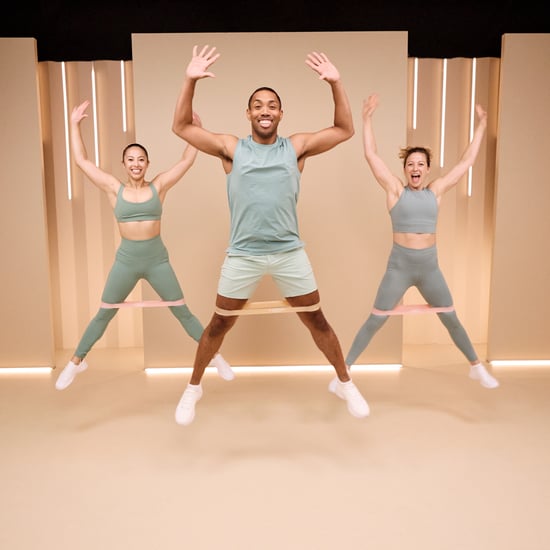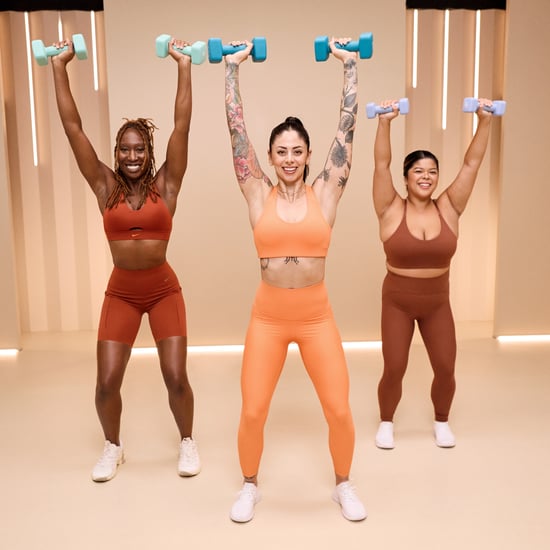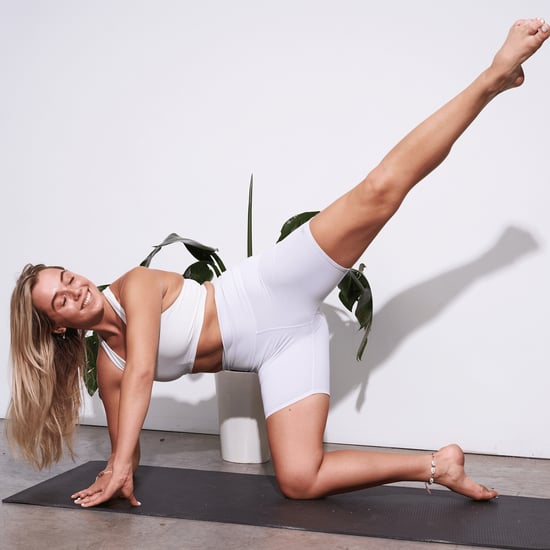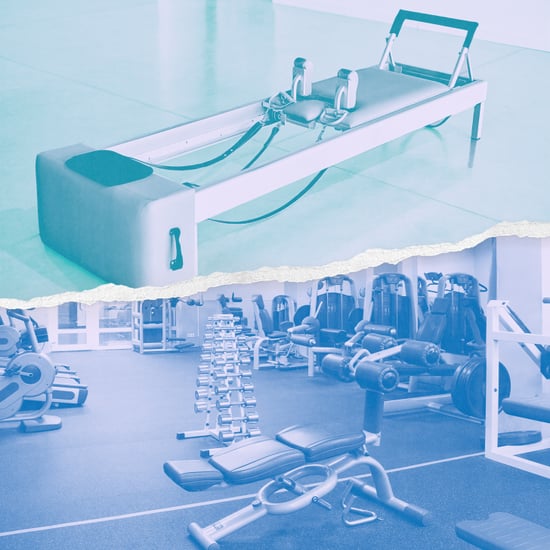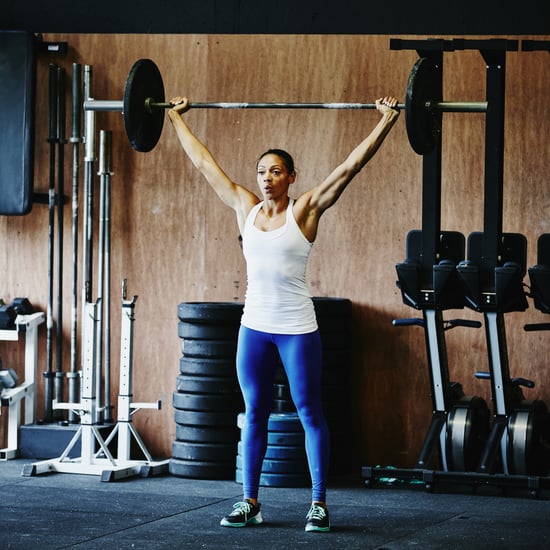Single-Arm Kettlebell Exercises
These Are the Only 6 Single-Arm Exercises You Need to Do With a Kettlebell
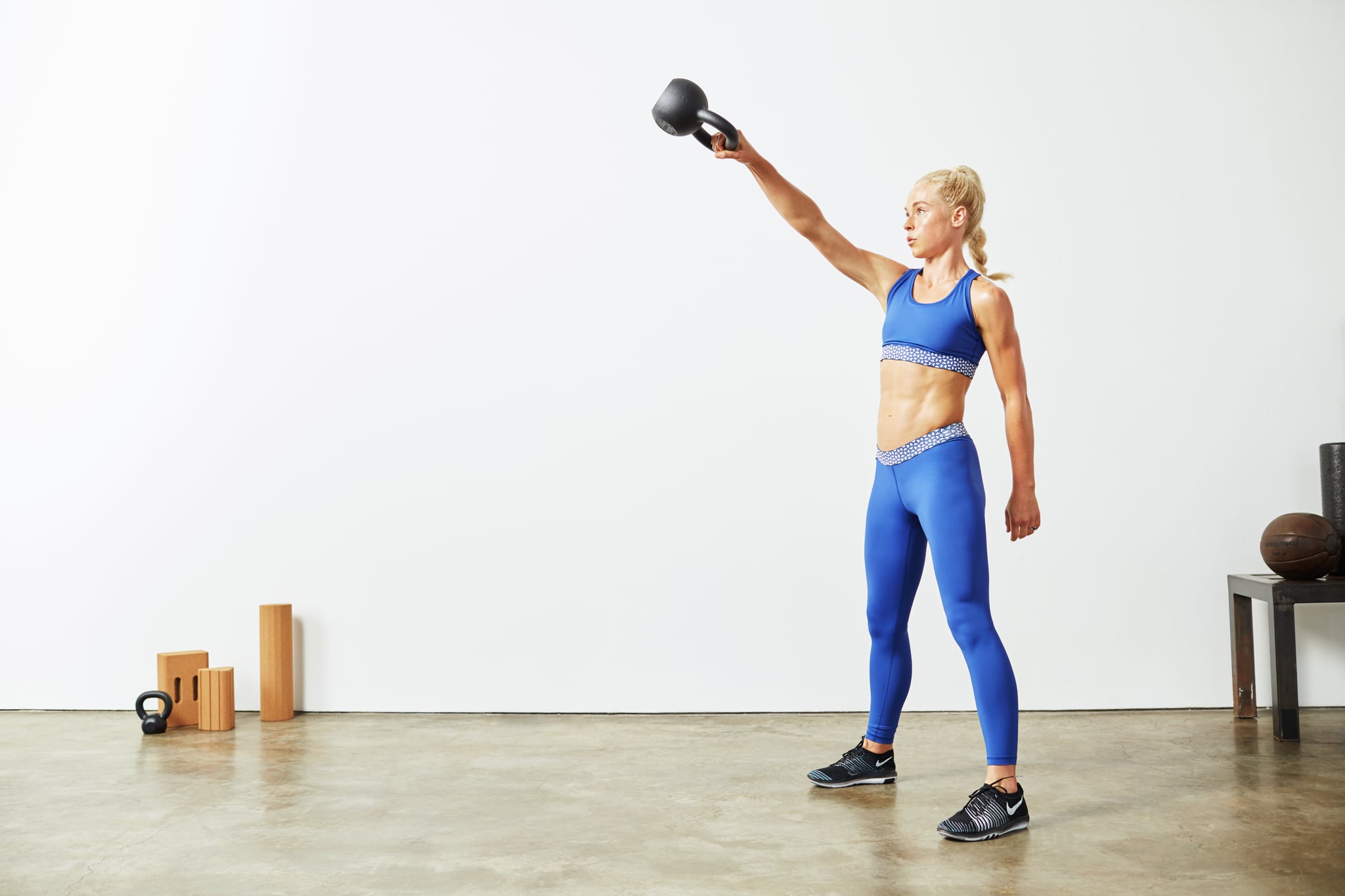 Image Source: POPSUGAR Photography / Kathryna Hancock Product Credit: Tory Sport leggings and sports bra.
Image Source: POPSUGAR Photography / Kathryna Hancock Product Credit: Tory Sport leggings and sports bra.
If you're looking to blast calories and get lean, defined muscle simultaneously, look no further than the kettlebell. Not only can this piece of equipment burn up to 20 calories per minute and two calories per swing, depending on the individual, but it can also work multiple areas of the body and fits conveniently in a home or office cubicle. If you want to give yourself an added challenge, you can ditch one arm for kettlebell work, too, to better target a particular muscle group at once. Here are the six best single-arm kettlebell exercises that will improve strength and build some serious muscle.
Kettlebell Snatch
This movement gives you some cardio and endurance perks, and it's particularly challenging on the grip, the shoulder stabilizers, and the hips. Basically, it's a great move to add to your kettlebell workout. Here's what to do.
"The goal is to use a hip-hinging movement to put some momentum on the kettlebell and propel it into an overhead position. To begin, deadlift the kettlebell to a standing position, with the kettlebell resting between your legs and your thumb pointing back behind you. From there, hinge at the hip by pushing the butt back and allowing a slight bend at the knee. The shins should stay approximately vertical, and the chest should drop slightly, although the back should not round through this motion," says Todd Nief, owner and founder of South Loop Strength & Conditioning and Legion, to POPSUGAR.
"As you feel the momentum of the backswing, reverse the motion and bring the hips forward into extension. As the kettlebell starts to float upward, keep the arm relaxed and loose, and think about 'punching' through the bell toward the ceiling as you open your palm up," he says. "If you do this correctly, the bell will rotate around your wrist and end up resting on your forearm while your elbow is locked out overhead. If you do this incorrectly, the kettlebell will flip over onto your forearm and smack you pretty aggressively," he says.
Single-Arm Kettlebell Supported Row
The single-arm row is a classic for a reason. "It's one of the best ways to train the upper body, pulling muscles in both the arms and the upper back," Nief says. "To do the single-arm supported row with a kettlebell, find a bench or box that's about two feet off the ground. Plant one hand on that surface and spread your feet out behind you with a slightly staggered stance (leg opposite the working hand, slightly in front) so that your torso is at about a 45-degree angle to the ground. From there, you will pick the kettlebell in the working hand and row it to your chest at about the same latitude as the bottom of your sternum," he says.
"Think about the elbow staying tucked into your side (rather than flaring out) and the elbow driving down and back behind your torso. As you pull, avoid letting the shoulder roll forward excessively," he adds.
Single-Arm Kettlebell Z-Press
The z-press helps you focus on pressing overhead without using the hip. "For athletes with potential hip or spinal-stabilization issues, the z-press allows focusing on the overhead pressing pattern without having to worry about finding proper stability through the hips," says Nief. "The z-press primarily works the triceps and deltoids — as well as the muscles of the rotator cuff and the upper back that stabilize the shoulder and the scapula in an overhead position," he says.
"To do the z-press, sit on the ground with legs out in front — they can be spread slightly apart but should not be in a wide 'split' position. Rack the kettlebell in the working hand (elbow tucked into the ribcage, bell resting between the forearm and the bicep, and thumb between the collarbones). From there, press the kettlebell straight up overhead so that the elbow is locked out and the wrist, elbow, and shoulder are in a straight line, perpendicular to the ground," he says.
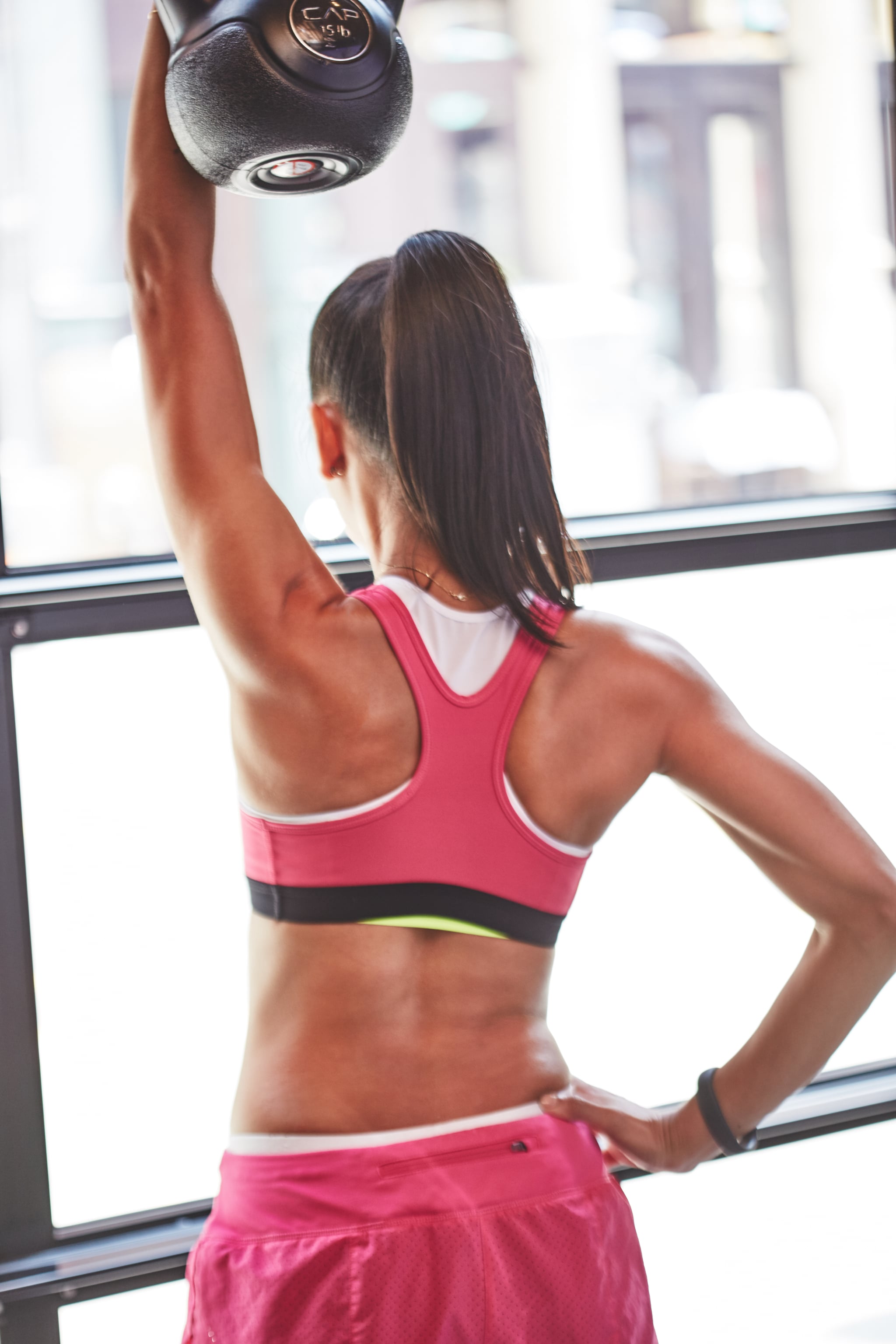 Image Source: POPSUGAR Photography / Benjamin Stone
Image Source: POPSUGAR Photography / Benjamin Stone
Waiter's Walk
The waiter's walk is a great shoulder-stability exercise that challenges the muscle endurance of the shoulders while also maintaining good position through the core when in motion. "The waiter's walk will primarily challenge the rotator cuff and upper-back muscles that stabilize the shoulder while also working the core to keep the ribcage down and prevent rotation," he says. "To do a waiter's walk, get the kettlebell overhead anyhow (either through a snatch or a clean-and-press). From there, find a solid overhead position — the elbow should be locked out, the ribcage should be down, the lower back should not be overextended, and the armpit should be facing forward. The wrist, elbow, shoulder, hip, and knee should also be in alignment, perpendicular to the ground," he says.
Once this position is established, simply walk with the kettlebell overhead, keeping proper position.
Suitcase Deadlift
The suitcase deadlift is an excellent movement to work on for both hinging at the hips and resisting rotation through the torso. "Suitcase deadlifts will train the grip on the working arm, the hips and posterior chain, and the abdominal musculature that prevents the spine from rotating," he says.
"To do the suitcase deadlift, set up with the feet together and a heavy-ish kettlebell on the outside of your feet. Hinge over by pushing the hips back and slightly bending the knees while also making sure that the spine stays straight. Grab the kettlebell, then lift to a standing position, with the hips and knees fully extended and the kettlebell at your side. Lower to the floor through the same hinging motion," he says.
As you perform this movement, make sure that the torso does not rotate and that you do not "lean away" from the kettlebell in the standing position.
Single-Arm Kettlebell Front Carry
The kettlebell front-rack position is one of the more demanding positions to hold, isometrically, says Nief. Yet if you work on holding this position with a neutral spine, you can really target the upper back and the pulling muscles of the working arm, he says. "To do this correctly, we need to rack the kettlebell in the proper position, which can be very difficult to hold. The working arm should have the elbow tucked into the ribcage, the thumb between the collarbones, and the kettlebell resting between the bicep and the forearm," he says.
"Since we're holding this position to develop isometric strength, make sure that the lower back is not arched and you're not 'leaning back' to stabilize the kettlebell. Once you've established a solid front-rack position, start walking around, and resist the urge to lean back to find stability as you move," he says.
